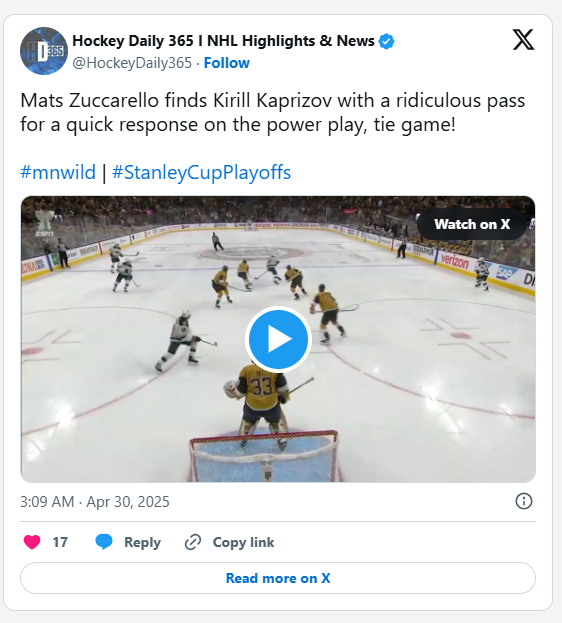
Kirill Kaprizov’s potential eight-year, $120 million contract with the Minnesota Wild, likely carrying a $15 million annual cap hit, reflects his elite production—185 goals and 386 points in 319 games. At 28, signing through his age-35 season carries risks, as long-term deals for players nearing their 30s often sour late, like Zach Parise and Ryan Suter’s 13-year, $98 million contracts did.
Recent examples—Steven Stamkos (34, 27 goals, 53 points), Taylor Hall (33, 18 goals, 42 points), Chris Kreider (33, 22 goals, 30 points), and Vladimir Tarasenko (33, 11 goals, 33 points)—show declines are common in the mid-30s. Still, Kaprizov’s exceptional talent suggests he could defy this trend, though the Wild must weigh the inevitable risk of regression against his current dominance.

Mats Zuccarello’s remarkable longevity, producing 79, 67, 63, and 54 points from ages 34 to 37, highlights how late bloomers with less early-career wear-and-tear can defy typical mid-30s declines. With only 67 NHL games by age 26, compared to Steven Stamkos (569), Taylor Hall (453), Vladimir Tarasenko (341), and Chris Kreider (323) through age 25, Zuccarello’s body endured less strain.
Kirill Kaprizov, with 203 games through age 25 and fewer than Tarasenko or Kreider at the same age, benefits similarly. His playmaking, like Zuccarello’s, relies on vision and skill rather than physicality, potentially sustaining his elite production into his mid-30s, despite the risks of an eight-year, $120 million contract.
While not a universal rule—Alex Ovechkin (324 games by 23, 44 goals at 39) thrives despite heavy mileage, and Jason Pominville (222 games by 25) declined—Kaprizov’s low game count and playmaking prowess suggest he could age gracefully, mitigating concerns about his deal becoming an albatross.
Kirill Kaprizov’s elite playmaking, rooted in vision and spatial manipulation, positions him to age better than pure goal-scorers reliant on elite shot velocity and reaction time, which fade with age. Unlike Alex Ovechkin, whose exceptional shooting has defied aging, most players lose their scoring edge in their mid-30s.
Kaprizov’s crafty playstyle, akin to Mats Zuccarello’s, emphasizes passing and hockey IQ over raw physicality, suggesting his effectiveness could endure through an eight-year, $120 million contract, even if his 40-goal seasons wane by age 34. His low career game count (203 through age 25) further reduces wear-and-tear, bolstering his chances of sustained production.
He can play Zuccarello’s game and has been similarly shielded from early-career wear-and-tear. Those parallels to his best friend are primed to keep him productive through whatever length of contract he’d sign in Minnesota.
Leave a Reply